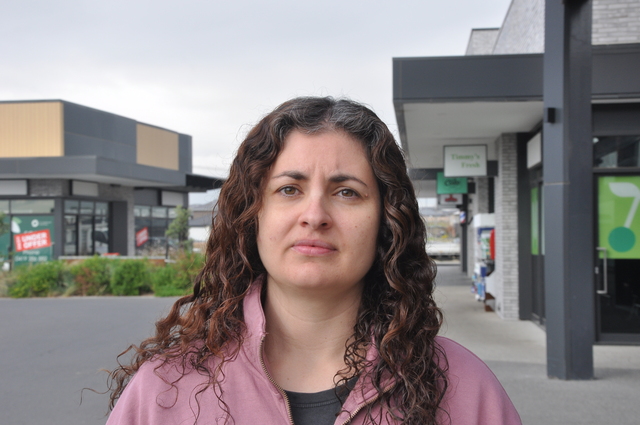A local parent’s request for crossing supervisors at the Viewbright Road and Bells Road intersection in Clyde North has been dismissed, with the City of Casey saying that it did not meet the requirements of the number of students crossing per hour.
Nicole Stegmann walks her three primary school children to the campus on a regular basis, enough to lead her to the conclusion that even with lights, the crossing is seldom safe, especially at peak hours.
Viewbright Road crosses through a crucial intersection with Bells Road, turning into Skylark Boulevard, and serves as the crossing point for students attending Hillcrest Christian College.
According to Nicole, it’s very common to see drivers during these busier times to “just run red lights, at every single cycle”.
“So I know to stop and wait, and I see other kids that stop, wait and then stop.
“Even this morning, there were four or five kids on bikes that didn’t get off, moving with people walking and crossing the roads – it’s just chaos,” she said.
Stegmann added that off-peak, the road functions like any other, with fewer vehicles and people crossing, the worry isn’t there.
However, during the morning and mid-afternoon periods is when the traffic accumulates, and for Stegmann, a minimum of two crossing supervisors is a must.
Contacting the City of Casey, she received a reply that detailed the decision not to implement crossing supervisors at the intersection, providing a list of criteria that needed to be met in order for supervisors to be considered.
The response from the email said that Casey has “undertaken observations and pedestrian/vehicle counts at the Bells Road and Viewbright Road, Clyde North intersection, and it did not meet the minimum number of primary students per hour”.
“There are a lot of parents who are walking their kids to school, and even one morning, I asked my child, who’s 11 years old, if they would be comfortable walking to school by themselves, and they said no,” Stegmann said.
“People aren’t paying attention, but at least, if we could get that big lane covered, even if there’s a camera or something, just to mitigate the risk.”
Speaking on the presence that crossing supervisors provide, Stegmann said that when there are more “visual cues that say, this is a school”, there’s a bigger impact on safety.
“A lot of people seem not to realise that it’s a school zone that they’re driving through.
“Hillcrest has a lot of trees and it’s covered up, but people also aren’t paying attention to signs, and the limits are going from 60 to 40, then 40 to 60.
“A lot of motorists are not paying attention, but if there are signals, more signs, and they know that there are lollipop people in the morning and afternoon, it hopefully makes them more alert,” she said.
In the council’s response relating to criteria, it was added that an assessment of accident risk to children crossing the road at a site is dependent on traffic volumes, vehicle speeds, visibility and the number of children crossing.
It was highlighted that primary children are particularly at risk, with children crossings for primary school children are calculated into the criteria for additional supervision by multiplying the number of children (a minimum of 20) by the number of vehicles in the hour (a minimum of 100), and if that figure exceeds 5000.
Applicable to students of Hillcrest College, secondary schools have a different formula, where the number of children (also a minimum of 20) is multiplied by the number of vehicles in the hour (a minimum of 250), and exceeds 25,000, and is only when additional supervision is considered.
“Most people cross at that point, so having two crossing attendants for each lane would stop the kids from riding their bikes,” Stegmann said.
“We need to have those lollipop signs and for them to blow the whistle, because that’s really it, the kids don’t have the awareness that adults do.
“But that’s really it, it’s just that time in the morning and the afternoon to stop the possibilities of someone stepping onto a road where a car could just come through.”
On other measures to calm traffic, Stegmann said that despite sections of Bells Road coming from St Germain Central still being limited to 40/kmh, “no one does 40”.
“I mean, they’re doing 40/kmh when the traffic’s backed up all the way down the road, but when they get that opportunity, they’re flying through,” she said.
In the council’s response to Stegmann, the School Crossing Supervisor Program is a responsibility under the State Government, and is listed under the Road Management Act 2004 and the Transport Integration Act 2010.
Their criteria also added that the School Crossing Risk Assessment Framework is used to assess new crossing sites and greenfield sites, but not existing infrastructure.
This in turn provides an output that a supervised children’s crossing or a supervised signalised crossing is required.
Further details on the other criteria included that pedestrian-operated signals needed more than 20 primary school children per hour.
For other crossings, the council obtains the Department of Transport and Planning’s (DTP) agreement to the need for supervision, on account of special needs and other factors related to safety.
This is anything from excessive vehicle speed, road geometry, limited sight distance, volume of heavy vehicles and road width.
Stegmann is looking for a bigger emphasis on safety, saying that the concern is not her own, but also other parents who walk their children in the morning.
This story is developing, and more information will be added when available.







